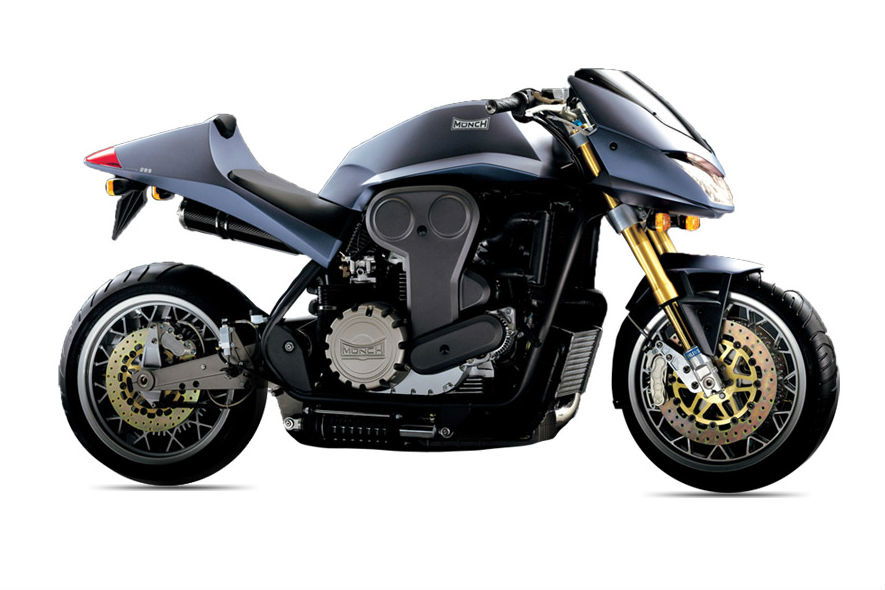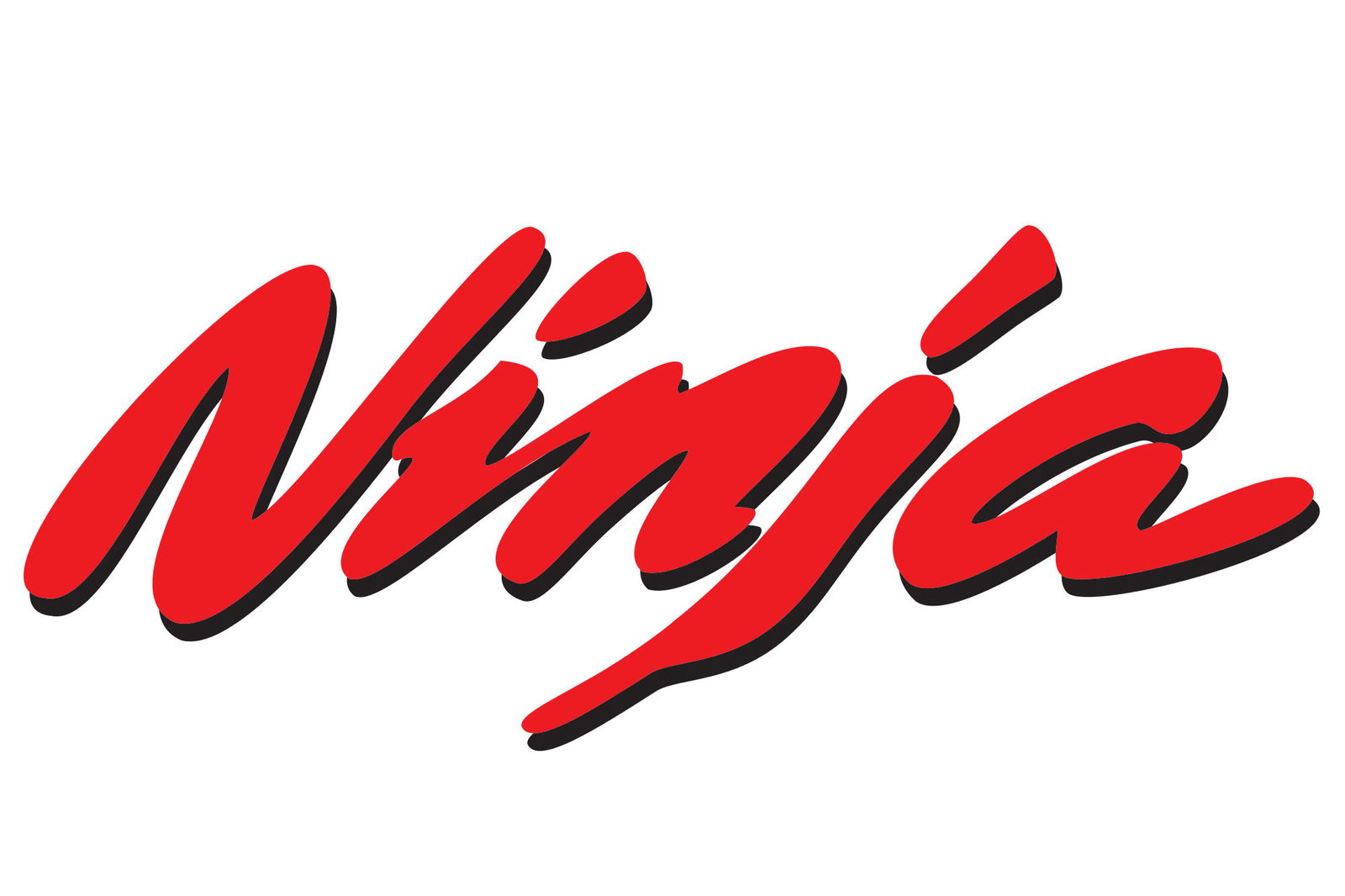Top 10 Best Wankel or Rotary-Engined Motorcycles
Rotary or Wankel engines may have ultimately proved a blind alley for both cars and bikes, but there were plenty of highlights along the way…

Remember rotary engines? The Felix Wankel-developed (stop tittering at the back) rotating engine design as flirted most famously with by the phenomenally fast JPS Norton racers, not to mention the Mazda RX-7 and NSU car?
Well, although ultimately a development dead end, rotary engines did also, briefly, power some of the most fabulous and fascinating motorcycles of the last century.
Won’t go into detail about how Wankels work here, since it’s a slightly mind-bending concept based on a mind-bending movement that seem to defy logic (you can see a great animation here, though).
But the basic idea of getting rid of all the reciprocating bits of a normal engine – pistons, con-rods, valves – and replacing them with a design that does the same suck-squeeze-bang-blow sequence using purely rotating parts is, frankly, genius. Sadly it’s genius that’s hamstrung by a couple of flaws - most notably difficulties in sealing the rotor tips - which effectively ended its challenge to conventional piston engines.
So, which were these fabulous rotary/Wankel motorcycles? We all know about Nortons and Suzuki RE5s, but there have been a host of other Wankel-engined bikes over the years, from prototypes to full-production models. Here are our top 10 picks.
You can find out more about rotary engines here.
10: Hercules/DKW W-2000

Engine 294cc single rotor Power 27-30bhp Torque 24.5ft/lb
Weight 180kg Seat height N/a Price used £3000-£5000
First on our list comes the earliest production Wankel motorcycle. The Hercules, which was marketed as a DKW in the UK, was built in Nuremberg between 1974 and 1977 with around 1800 produced and as such was one of the most successful rotaries in terms of numbers built.
Sadly, despite the bike’s muscular name it was a little limp at around 30bhp from 294cc (although capacities of Wankel engines don't necessarily bare direct comparison to those of piston engines), and despite being German its build quality was patchy at best.
Pros
* First production rotary motorcycle
* Relatively light and affordable
* Reasonable commuter
Cons
* High insurance
* Fairly crude
* Minimal performance
9: Yamaha RZ201
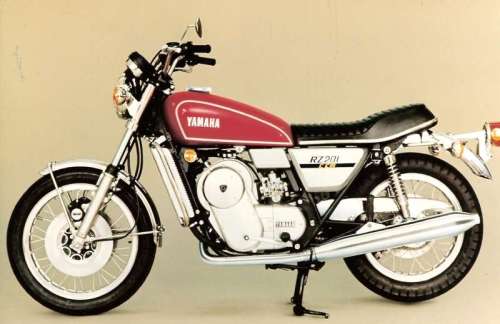
Engine 660cc twin rotor Power 66bhp Torque 56ft/lb
Weight 220kg Seat height N/a Price N/a
No, you didn’t miss something. Yamaha hasn’t ever made a production Wankel bike. But it nearly did, and this was it. Revealed at the 1972 Tokyo Motor Show, the RZ201 had a 660cc Wankel and made 66bhp.
Although pretty tidy-looking, only a couple of prototypes are believed to have been made. If you like the look, though, you can always try to find a conventionally-powered Yamaha TX750 – it used the same frame and suspension and looks virtually identical to the prototype RZ201.
Pros
* Middling, smooth performance
* Good all-round proportions
* Neutral styling
Cons
* Just two prototypes built
* Never tested
* Impossible to buy
8: Norton Interpol II

Engine 588cc twin rotor Power 79bhp Torque 55ft/lb
Weight 235kg Seat height N/a Price used £4000-£5000
Norton spent most of the 1970s fiddling with prototype rotary-powered bikes, but it took until 1984 before finally creating its first production Wankel, the Interpol II. But you still couldn’t actually buy one. Not unless you were a police force or breakdown service, that is.
Of course, they turn up occasionally in private hands these days, but these were really somewhere between prototype and production machines. If that fairing looks familiar it’s because it was borrowed from the BMW R100RT that was the favoured cop bike of the day.
Pros
* The ‘first’ production Norton rotary
* Rare and interesting
* Still affordable (if you can find one)
Cons
* Fairly crude
* Uninspiring performance
* Basic spec
7: Kawasaki X99 RCE
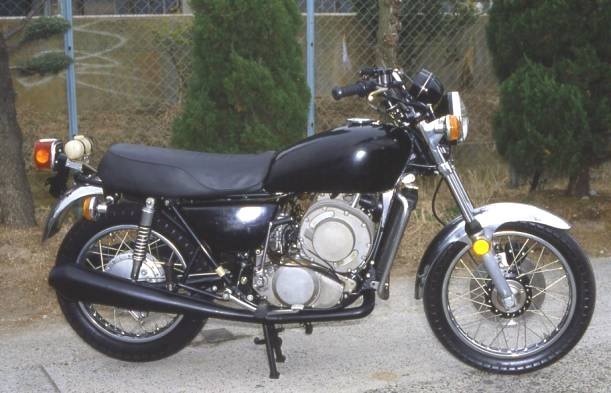
Engine 896.8cc twin rotor Power 86.6bhp Torque 78ft/lb
Weight N/a Seat height N/a Price N/a
Back to prototype waters again here, but Kawasaki’s twin-rotor X99 was clearly carefully considered for production, since the firm went to the effort and expense of buying a licence to build the Wankel motors.
First shown in 1972, it was purported to be a 900cc machine making 85hp, but as the mid ‘70s fuel crisis took over, it disappeared without trace.
Pros
* Virtually production ready
* Reportedly impressive performance
* As rare as they get
Cons
* Never went into production
* Most haven’t even heard of it
* No-where to be seen, either
6: Norton Classic

Engine 588cc twin rotor Power 79bhp Torque 55ft/lb
Weight 235kg Seat height N/a Price used £10,000-£20,000
After endless development the Norton Classic was the first proper production rotary from the British firm.
Using the same air-cooled, twin rotor 588cc motor from the Interpol II and made as a limited edition of just 100 bikes, it was seen as a first step towards the comeback of both the rotary and Norton as a real motorcycling power when it reached production in 1987 – a full 11 years after the last serious Wankel production bike, the Suzuki RE5, had been dropped.
Pros
* One of ‘best’ road rotaries
* Historical significance
* OK manners
Cons
* Basic, crude & expensive
* Rare – just 100 built
* Too little, too late
5: Van Veen OCR1000
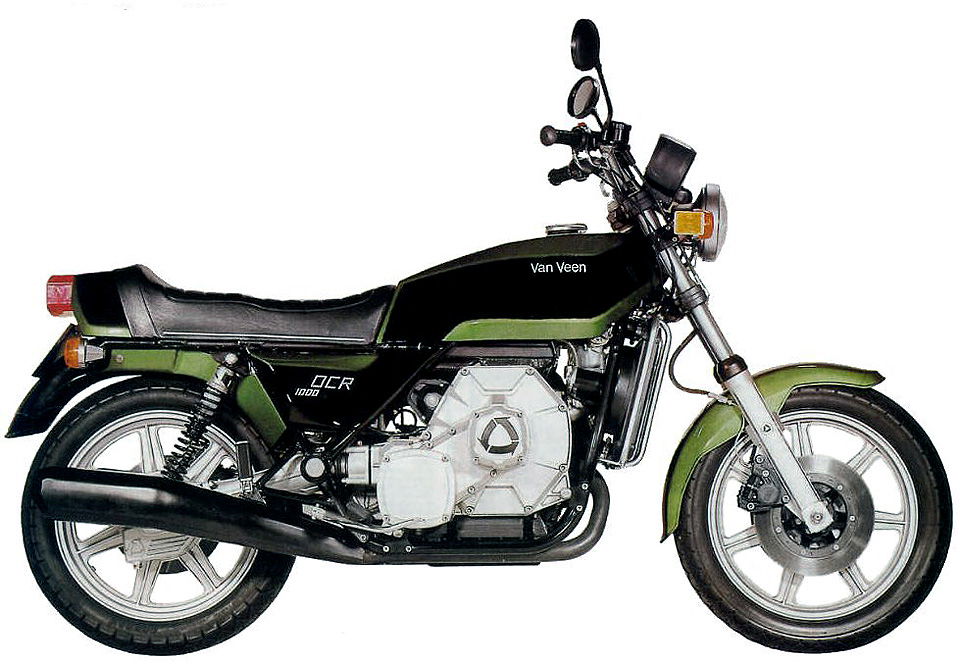
Engine 996cc twin rotor Power 107bhp Torque N/a
Weight 291kg Seat height N/a Price used £15,000-£20,000
One of the few motorcycle firms to emerge from Holland, Van Veen’s attempt to make a Wankel bike was ambitious. The twin-rotor, 996cc engine (actually developed by NSU and Citroen and originally intended for a car) made a claimed 107bhp, had shaft drive and was said to give the bike a 135mph top speed – not too shabby in 1978 when production finally started, several years after the first prototypes had been made. It looked pretty good, too, although the rotary motor isn’t as aesthetically pleasing as a piston engine. But buyers weren’t convinced and only 38 were made before the project folded in 1981. A 2011 attempt to revive the bike with a ridiculous €85,000 price tag is supposed to have added another 10 machines to that total.
Pros
* Impressive performance
* Classy design
* Rare and exclusive
Cons
* Always expensive
* Just 38 made
* Irrational
4: Norton Commander

Engine 588cc twin rotor Power 85bhp Torque 56ft/lb
Weight 235kg Seat height N/a Price used £6000-£10,000
The ‘P53’ Commander of 1989 was another proper production bike, this time with Norton’s new water-cooled twin-rotor engine. And it wasn’t too bad by all accounts, even if you needed to be slightly obsessed with either the Norton name or the unusual engineering to choose one over, say, a BMW or Honda.
The firm’s success in racing at the time, using a derivative of the Commander’s engine, helped give it a boost.
Pros
* Basically a production Interpol
* As practical as rotaries get
* Interesting and still affordable
Cons
* Thirsty
* Excess of Yamaha components
* Fixed panniers
3: Suzuki RE5
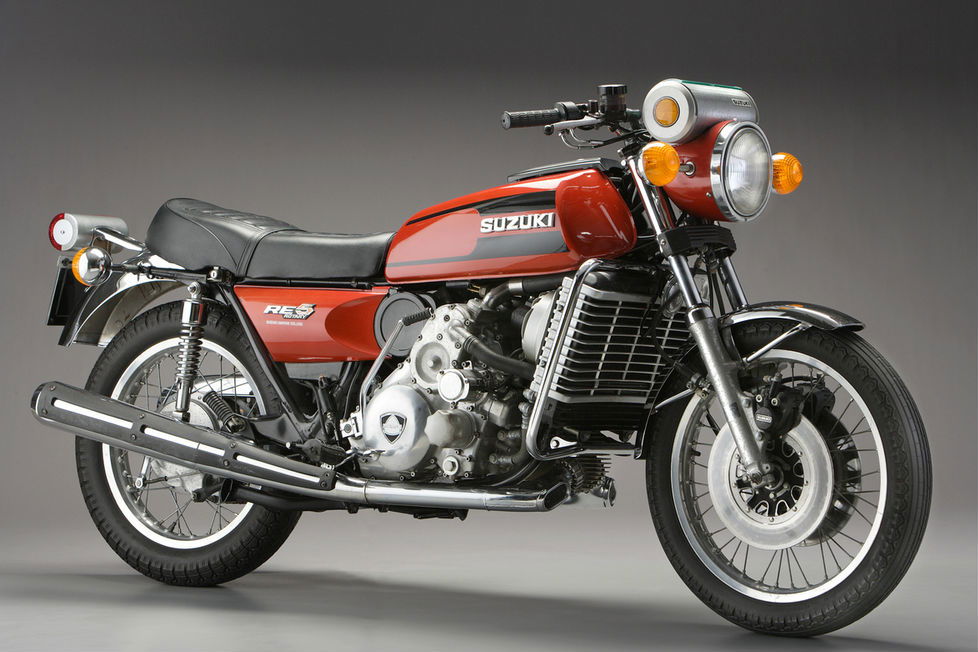
Engine 498cc single rotor Power 62bhp Torque 55ft/lb
Weight 252kg Seat height N/a Price used £8000-£15,000
Realistically, if you want to experience a rotary-engined bike, you’re almost certainly going to end up with an RE5. While the other contenders on this list were made in tiny numbers, the Suzuki remains arguably the only bike to have been truly mass-produced. Go onto eBay right now and there will probably be one or two available.
The engine is only a single-rotor design (which means there’s a bit less to go wrong) and with 62bhp it wasn’t madly powerful even in 1974. But it’s smooth and intriguingly-styled, particularly in its initial form with input from Italian car designer Giorgetto Giugiaro (who in the ‘70s also designed the VW Golf, Lotus Esprit and 1981 DeLorean), with barrel-shaped instruments and tail light, which were replaced by conventional units in 1976.
Pros
* Most successful road rotary
* Still affordable
* Interesting design
Cons
* Flawed concept
* Thirsty and expensive
* Early styling questionable
2: Norton F1

Engine 588cc twin rotor Power 90bhp Torque 57ft/lb
Weight 192kg Seat height N/a Price used £20,000-£30,000
Given the fact that Norton was enjoying racing victories again with its rotaries in the late '80s, it seemed odd that the first production bike it built around the engine was the Commander tourer. That was remedied in 1990 with the launch of the F1, which was nearly a proper sports bike. Its styling was pretty decent, albeit reminiscent of the first-gen CBR600, CBR1000 and Ducati Paso.
Its all-enclosed fairing, as styled by Seymour-Powell, also meant it lacked the hard, race-rep look that would have really played on the firm’s on-track success. Shame, because the bits underneath were serious and included a beautiful aluminium Spondon frame and high-end WP suspension. Around 130 were made and prices today are steep.
Pros
* Sauciest of all sports rotaries
* Decent performance
* Excellent handling
Cons
* Always pricey
* No faster than a CBR600F at half the price
* Overheating issues
1: Norton F1 Sport
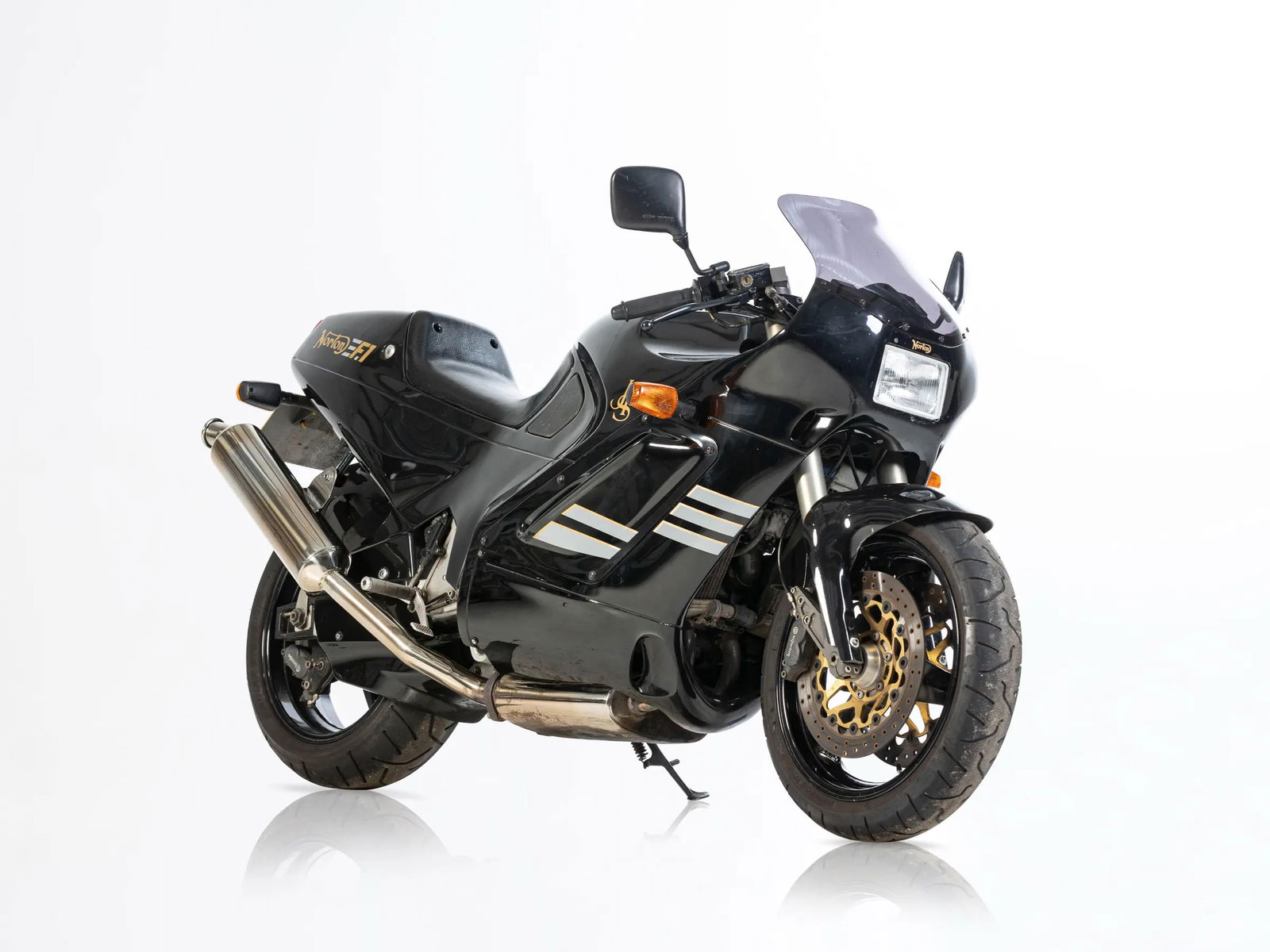
Engine 588cc twin rotor Power 90bhp Torque 57ft/lb
Weight 192kg Seat height N/a Price used £25,000-£35,000
But not as steep as prices of the even rarer 1991 F1 Sport, which finally gained proper race-rep styling like that on the firm’s BSB and TT bikes. Unfortunately, the firm only ‘got it right’ by something of an accident, as by 1991 Norton was in its death throes. The F1 Sport was more an effort to use up the remaining parts at the factory than a serious attempt to woo buyers in big numbers. Technically, its much the same as the F1, but with the race bike’s seat unit and new side panels that allow that Spondon frame to finally be seen. Unfortunately, the even better looking F2, shown as a prototype in 1992 and intended to be a cheaper follow-up to the F1, never reached production.
Pros
* Ultimate incarnation of F1
* Styled more like racer
* Unchanged performance/handling
Cons
* Even rarer/more expensive
* Only a handful made
* Still flawed
Top 10 rotary engine motorcycles Key Specifications and Technical Details Comparison
Price | Engine | BHP | Torque | Weight | Seat Height | ||
1 | Norton F1 Sport | £25-30,000 | 588cc | 90bhp | 57ft/lb | 192kg | N/a |
2 | Norton F1 | £20-30,000 | 588cc | 90bhp | 57ft/lb | 192kg | N/a |
3 | Suzuki RE-5 | £8-15,000 | 498cc | 62bhp | 55ft/lb | 252kg | N/a |
4 | Norton Commander | £6-10,000 | 588cc | 85bhp | 56ft/lb | 235kg | N/a |
5 | Van Veen OCR 1000 | £15-20,000 | 996cc | 107bhp | N/a | 291kg | N/a |
6 | Norton Classic | £10-20,000 | 588cc | 79bhp | 55ft/lb | 235kg | N/a |
7 | Kawasaki X99 | N/a | 896.8cc | 86.6bhp | 78ft/lb | N/a | N/a |
8 | Norton Interpol II | £4-5000 | 588cc | 79bhp | 55ft/lb | 235kg | N/a |
9 | Yamaha RZ201 | N/a | 660cc | 66bhp | 56ft/lb | 220kg | N/a |
10 | Hercules/DKW W-2000 | £3-5000 | 294cc | 27-30bhp | 24.5ft/lb | 180kg | N/a |
Rotary engines fast facts/Did you know?
- The rotary engine, so named for having a rotating ‘piston’ or rotor rather than reciprocating ones mounted on con rods, was first developed in the 1920s by German engineer Felix Wankel, then patented in the 1930s – hence the Wankel name
- The design’s main potential advantages are simplicity and compactness (due to fewer parts) and also higher power/weight
- The main disadvantages are reliability due to rotor tip dealing issues, higher fuel consumption and increased emissions of unburned hydrocarbons, the latter being the main factor in its demise.
- The most famous rotary automobile applications were the Mazda RX-7 and NSU Ro80, although Citroen, Chevrolet and others flirted with the idea.
- The most famous (and successful) motorcycle rotary was Norton. Although only a handful of production road machines were made, its Brian Crighton-developed rotary racers achieved considerable racing success between 1988 and 1994, with Steve Spray winning the British F1 championship in 1989, Steve Hislop famously winning the 1992 Senior TT and Ian Simpson winning the 1994 British Superbike Championship.
